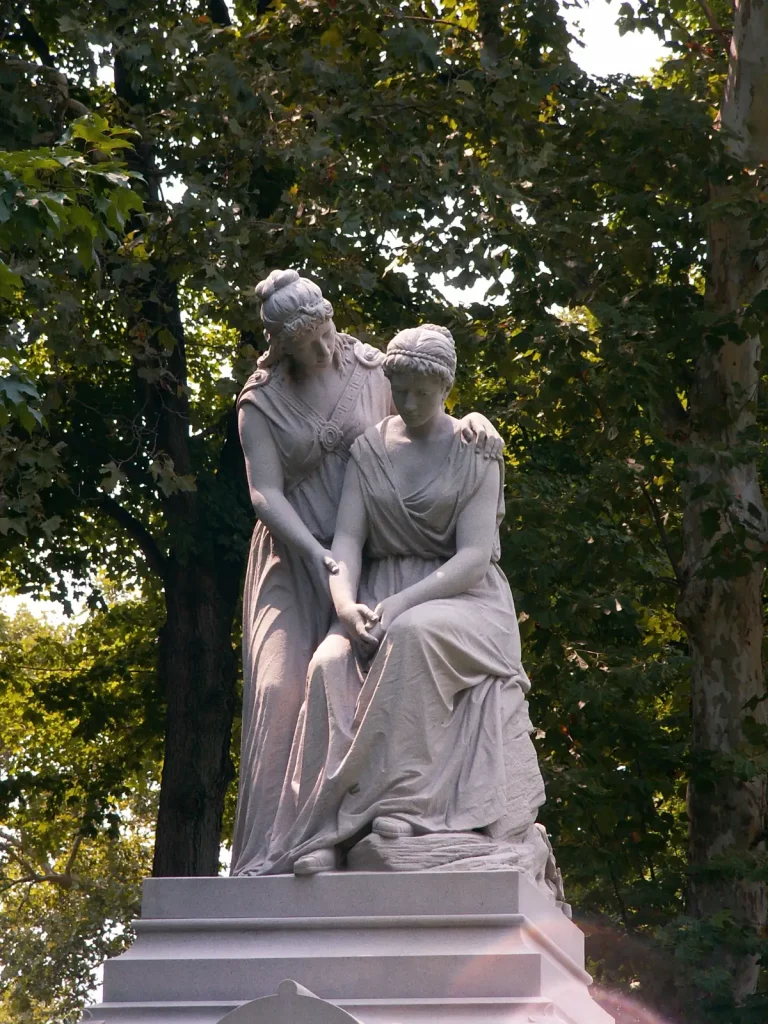
The sculptor is not known, but deserves to be; this scene of mourning and consolation is one of the most moving in the cemetery. The monument dates from 1890.




There are two distinct periods of Egyptian architecture in our cemeteries. The first, which has left few remains, came in the early and middle nineteenth century; the second, whose remains are abundant, was mostly in the early twentieth century. Here is a rare example of the earlier period, a mausoleum dating from about 1850. It is very different from the Hollywood-set Egyptian of the later period. Like most of the earliest mausoleums in the Allegheny Cemetery, it is dug into a hillside. The tapering pilasters and flanking obelisks mark the Egyptian character. Names and death dates of various Brewer family members are engraved on the bases of the obelisks.


A prickly Gothic monument to an officer killed in the Civil War. “Dulce et decorum est pro patria mori,” says the epitaph, although it probably didn’t feel all that good at the time.

The Ward mausoleum is tasteful but undistinguished on the outside. Inside, however, is an exceptionally fine stained-glass window. “Faith, Hope, and Charity. The greatest of these is Charity.”


Daniel Wallace and Daniel Wallace are buried here. The monument carries a Star of David; the statue (by an unknown sculptor) carries a cross and Bible. We suspect that the Star of David, or Seal of Solomon, is a Masonic rather than Jewish symbol here.
